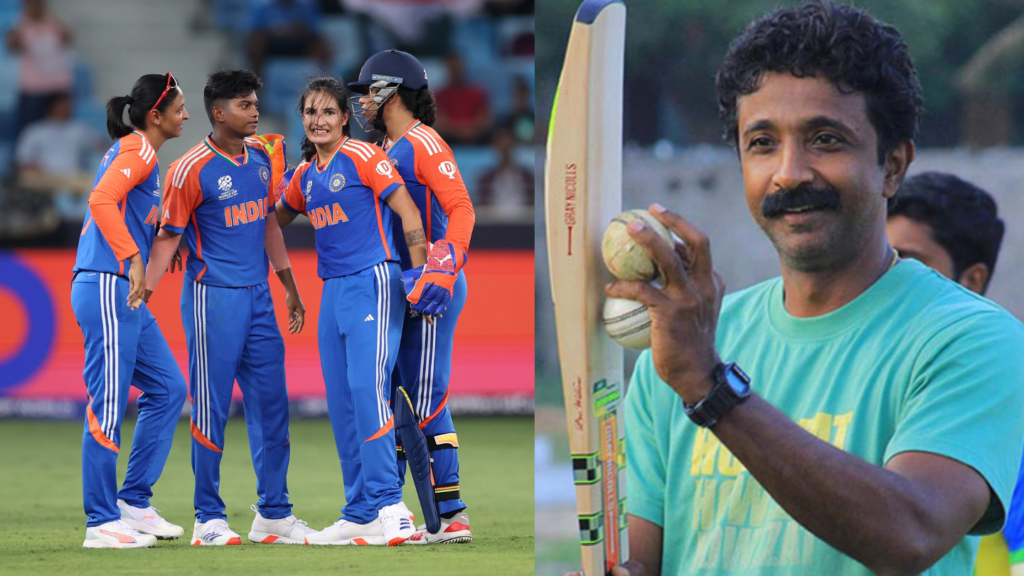
India’s women’s cricket team played their first game of this T20 World Cup against New Zealand on Friday. The fielding was disastrous, with missed chances, dropped catches, and overall below-par performances. Ahead of India’s crucial game against Pakistan, I spoke to Biju George, the former fielding coach of the Indian women’s team during the 2017 World Cup, to get his insights into the persistent fielding issues. Here are excerpts from the interview.
Q: Fielding has been a consistent issue for the Indian women’s team, particularly in high-pressure matches. Against teams like New Zealand, the gap is quite evident. In your opinion, what has led to these repeated lapses in fielding?
A: Fielding can be directly correlated to fitness levels. It has two aspects—your skill set and fitness, and more importantly, your attitude toward fielding. When I saw the Indian fielders against New Zealand—my first live women’s cricket match in a while—I felt that some of the fielders have slowed down considerably. The catching in Dubai is tricky; I’ve experienced this in IPL post-COVID with Sunrisers Hyderabad. The ring lights make catching difficult, and even New Zealand dropped catches. But their ground fielding was fine. If you have problems, you must address the elephant in the room.
Q: Our reporters observed that the Indian fielders tend to wait for the ball instead of attacking it. Is this a mindset issue, and did you face this during your tenure?
A: My journey with the Indian women’s team started in 2017, and we had a magical run that ended in heartbreak. Before that, I worked with the Under-19 women’s team, where players like Smriti Mandhana were still under 16. Back then, we were the best fielding side, even with players like Jhulan [Goswami], who had slowed down, and Mithali [Raj], who wasn’t the fastest. We took the most catches and had the most direct hits and run-outs. The difference from 2017 to 2024 is that ideally, we should have improved in fitness, approach, and skill set, but we haven’t.
When training on Indian grounds, like Chinnaswamy, the outfield is quick, so the ball comes to you. But in Dubai, with thick grass, you must attack the ball. Maybe the players aren’t mentally ready or confident enough, which is why they hang back. If you aren’t committed, you don’t give 100%, and that’s what’s happening.
Q: Fielding can make or break a game, especially in T20s. How do you rate the current team’s fielding, and what immediate changes would you recommend?
A: You have to set a field based on high-traffic areas. For example, if Jemimah [Rodrigues] is batting, I’d put my best fielder at cover-point. You need to identify the high-traffic areas for every player and make sure your best fielders are in the inner circle. Singles and doubles bleed us, and players like Jemimah should be fielding inside the circle, not on the boundary.
🚨 EXCLUSIVE
“India’s fielding woes stem from a lack of fitness and mentality. We were the best fielding side in 2017, so what happened?”@bijuthecoach, former @BCCIWomen’s fielding coach, on what’s holding India back in the #T20WorldCup.@TrishaGhosal @Future_Generali pic.twitter.com/HKpTOqJbFw
— RevSportz Global (@RevSportzGlobal) October 6, 2024
Q: We saw several dropped catches and missed chances. How much of this is due to pressure, and how can players remain composed in those moments?
A: It stems from the security provided by the dressing room. You need to tell players it’s okay to fail, but they must try. Training should replicate match scenarios. Jemimah took one of the best catches I’ve ever seen in women’s cricket because she had practiced that situation 60 times. My question is—are we training hard enough? Are we training like we would face Sophie Devine, who hits the ball as hard as anyone in the world? Fielders need to have pride in their zone.
Q: The team practiced fielding before the match, including separate fielding camps. What causes the gap between practice and performance?
A: It’s all about mindset. As a fielder, if you start questioning your own ability, you’re sunk. Fielders should wish every ball comes to them. They need to visualise themselves performing their best—taking the catch, cutting off the ball, or stopping runs.
Q: You were with the team in 2017, and now it’s 2024. Have you noticed any positive mindset shifts over the years?
A: I still interact with players like Jemimah and Arundhati [Reddy], and their attitude hasn’t changed—they still want to improve. But are we training hard enough? Are we putting the right fielders in the right positions? These are the key questions.
Q: If you had to name the best three fielders for inside the circle and three for boundary duty, who would they be?
A: For the inner circle, Jemimah, Deepti [Sharma], and Harman [Kaur]. For boundary, Smriti, Radha [Yadav], and Shreyanka [Patil].
Q: What advice would you give to aspiring women cricketers who want to become top fielders?
A: As a fielder, you’re always involved. Specialise in your role, give 100% in practice, and enjoy fielding. When you enjoy it, you wish for every ball to come to you. The ball will find you if you try to hide, so always be ready.
Q: If you were still with the team today, what would be your top three focus areas to improve fielding for the rest of the tournament?
A: In-tournament sessions can’t be long, but I’d have optional sessions for specific skill sets and avoid shuffling fielders around. Each fielder should know their position, visualise their role, and train accordingly.
Q: After the loss to New Zealand, do you think India can still qualify for the semi-finals?
A: I still believe India can have a good tournament and qualify, but we need to sort the batting order, have bowlers bowling at the right time, and ensure everyone knows their role. Sri Lanka will be tough if Chamari Athapaththu gets going, but if we can execute our plans, we can have a successful campaign.




